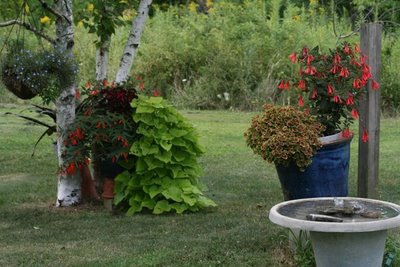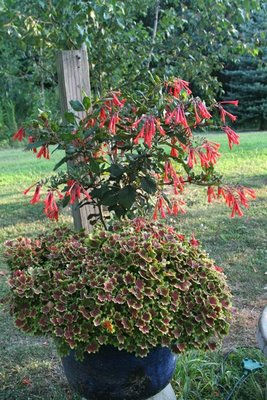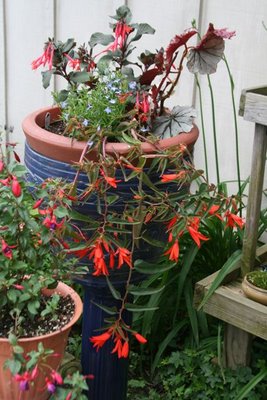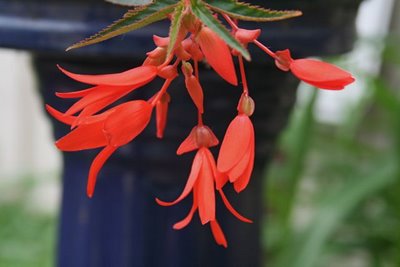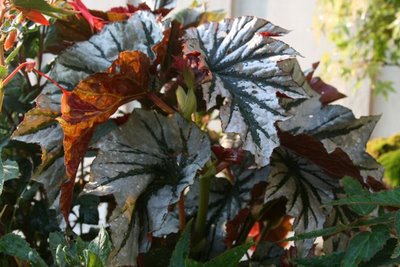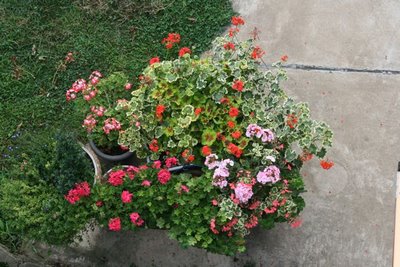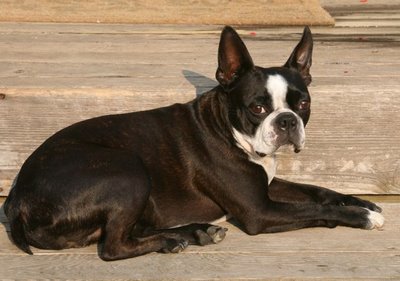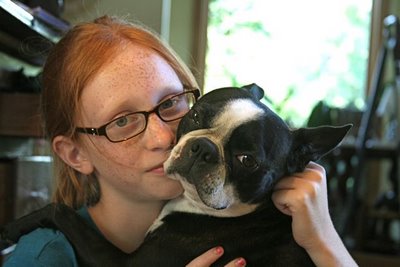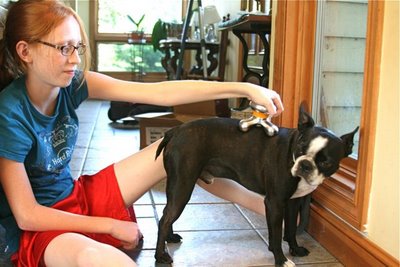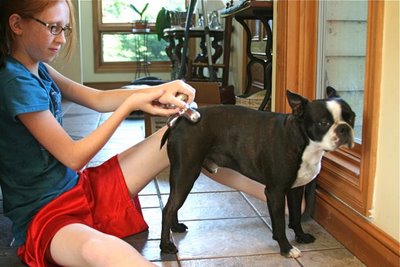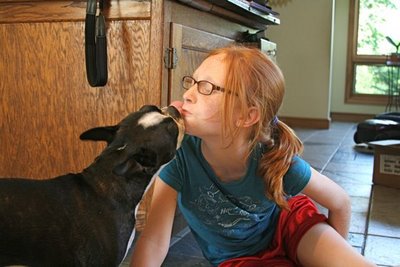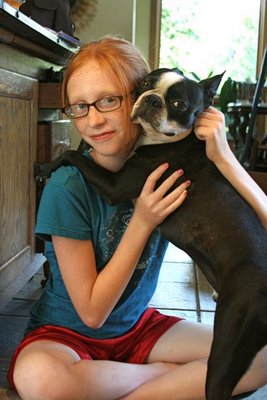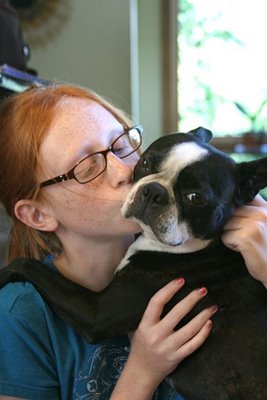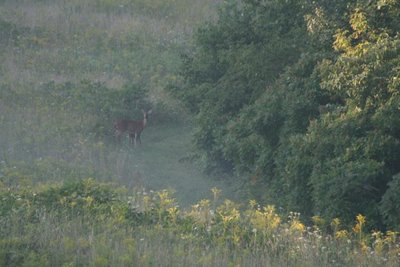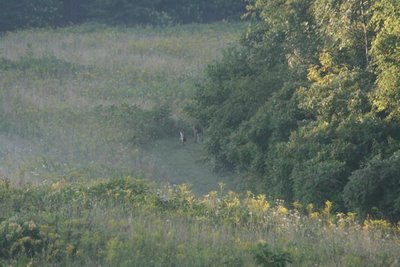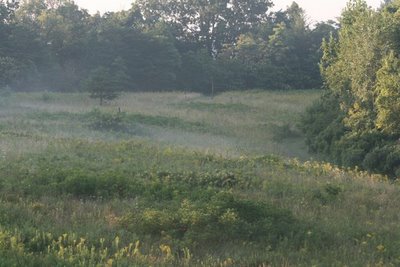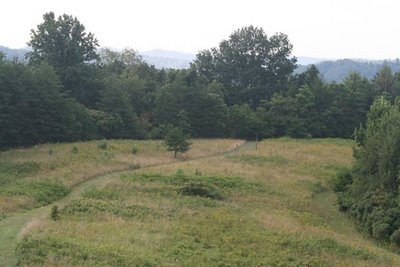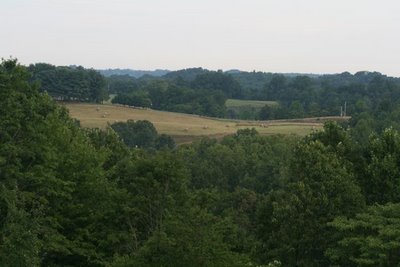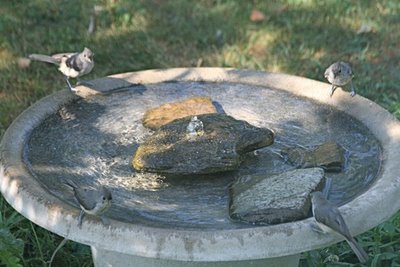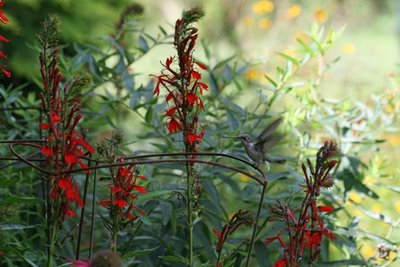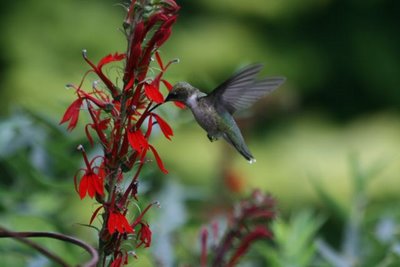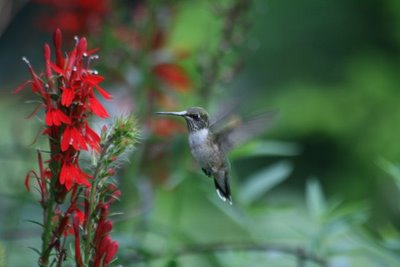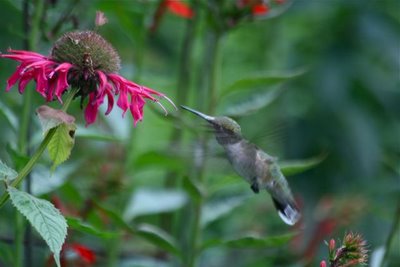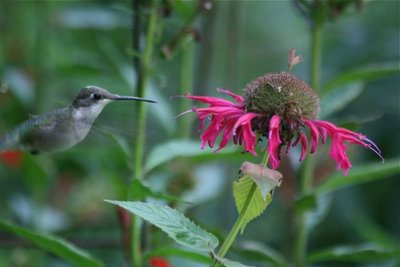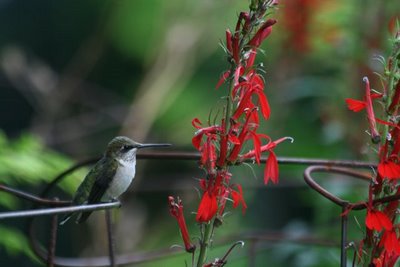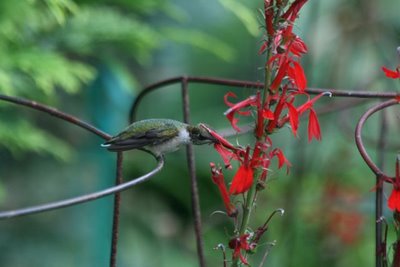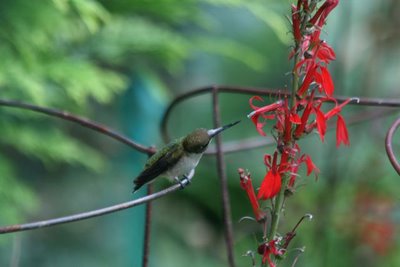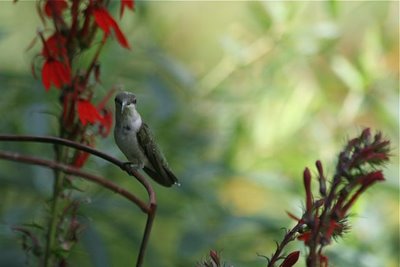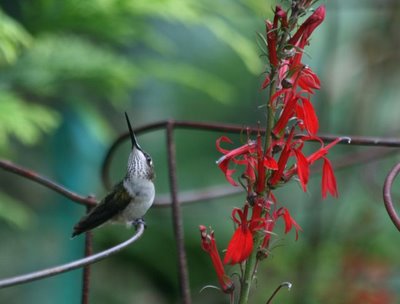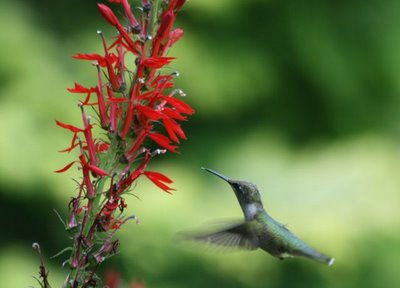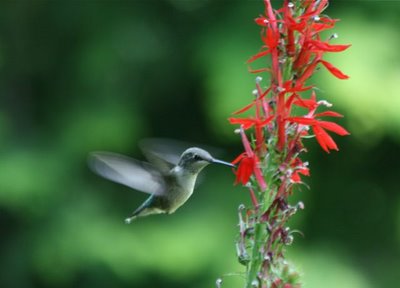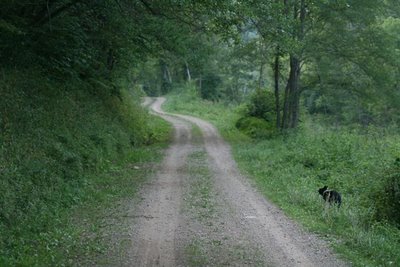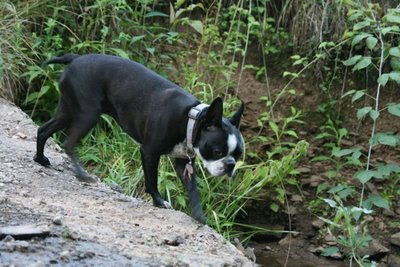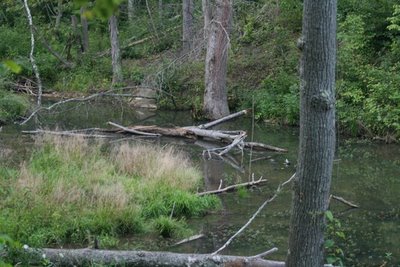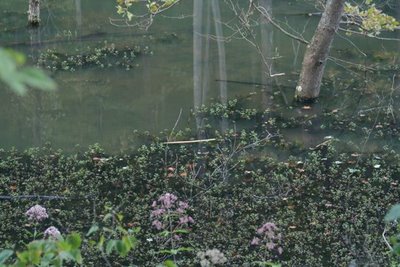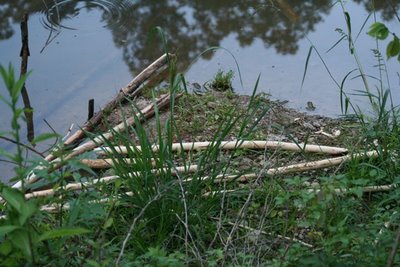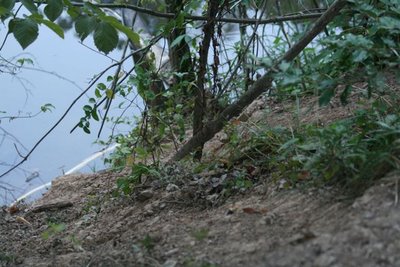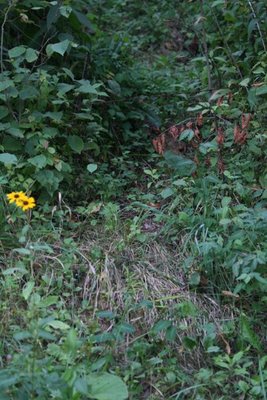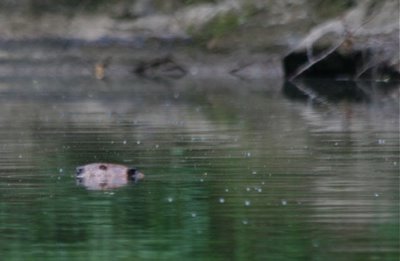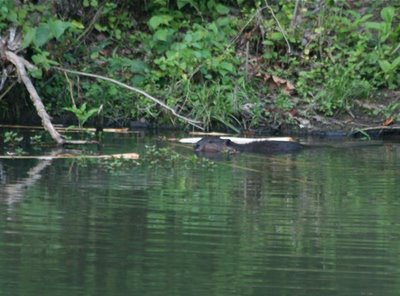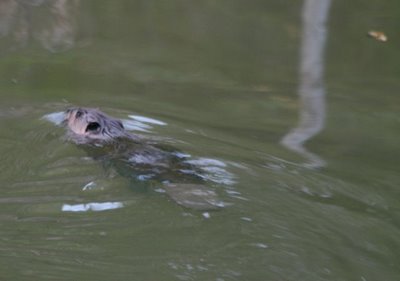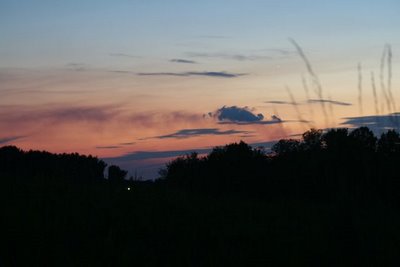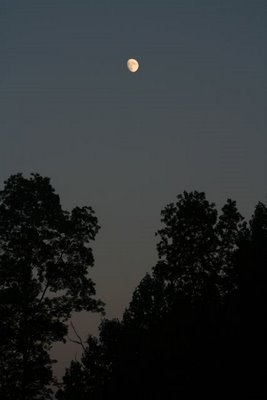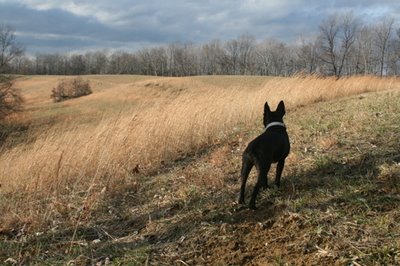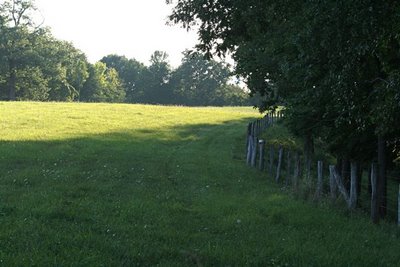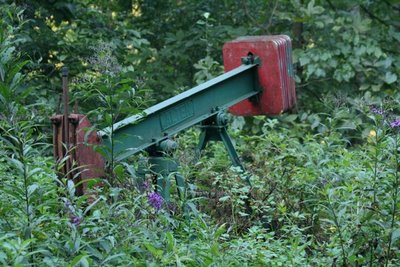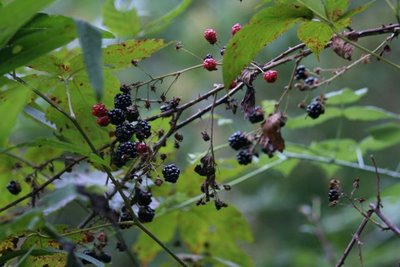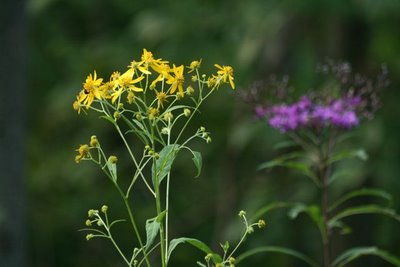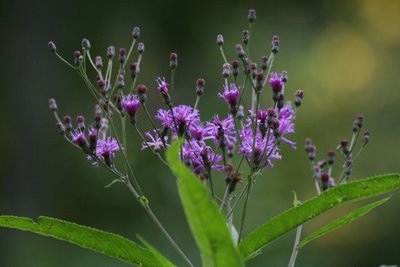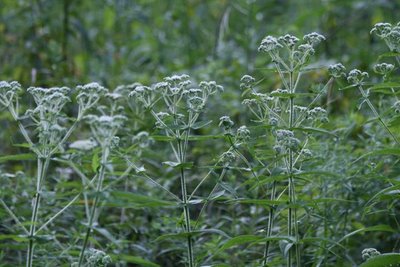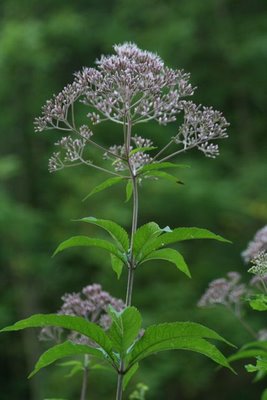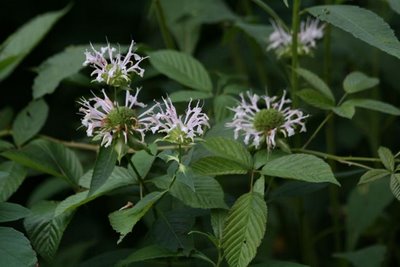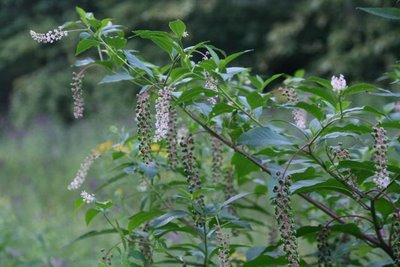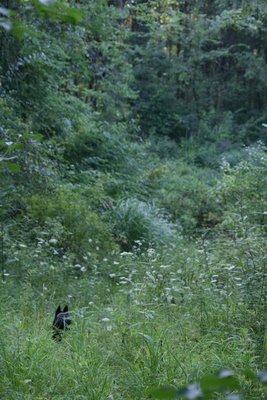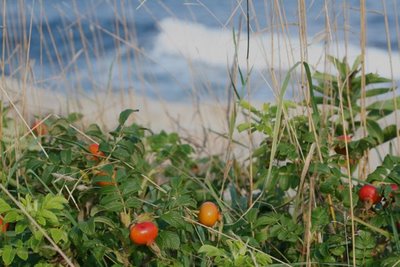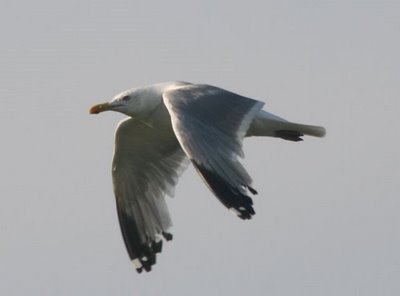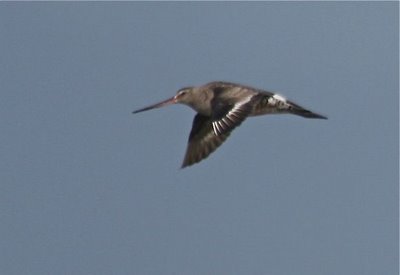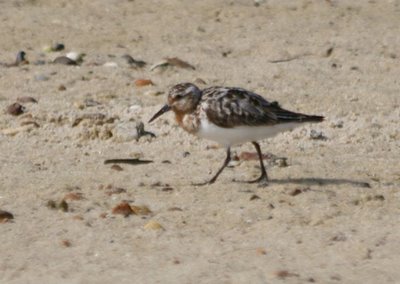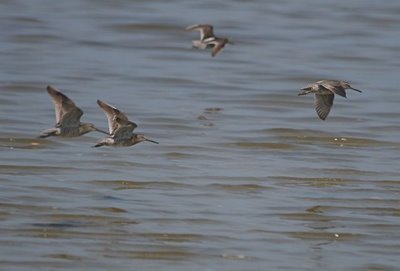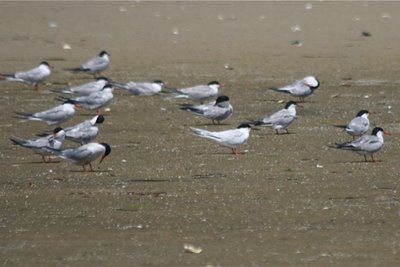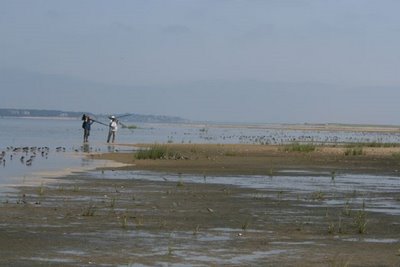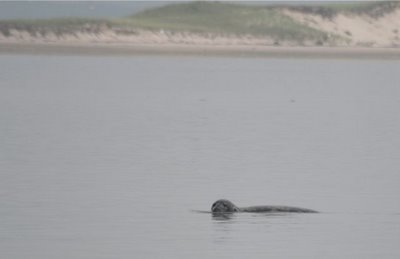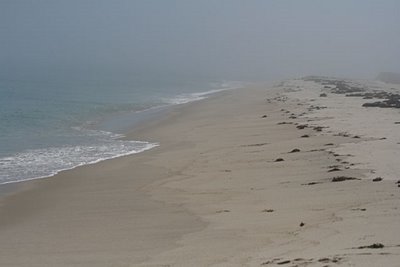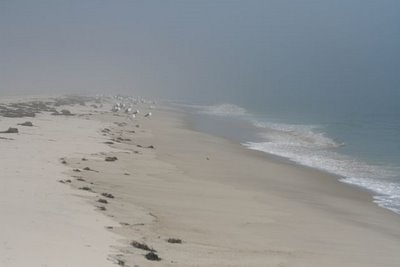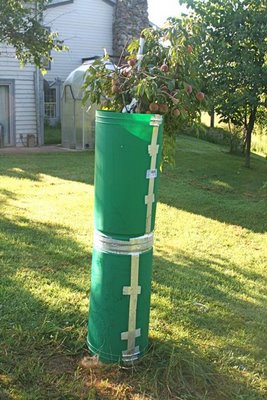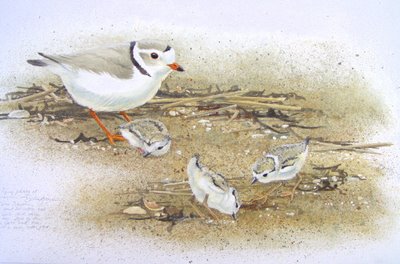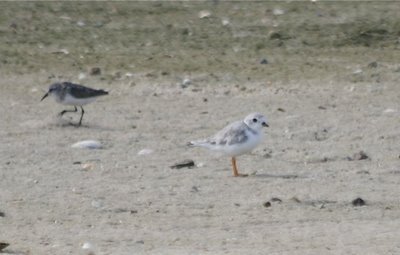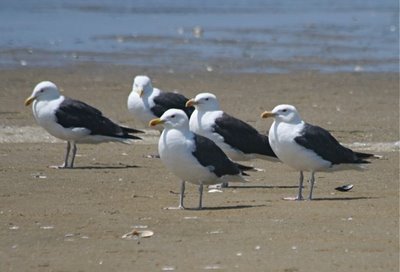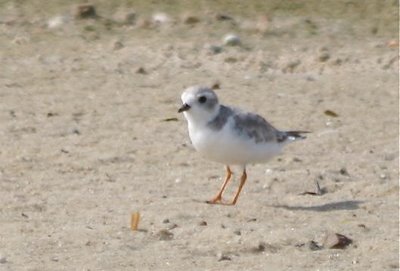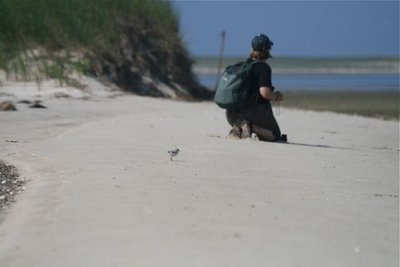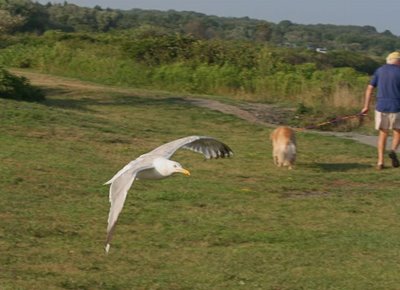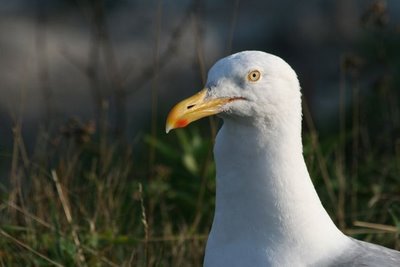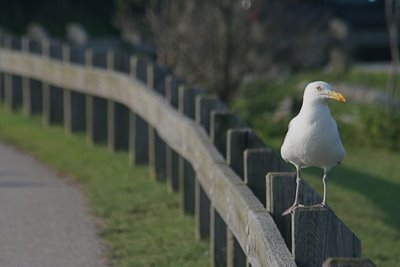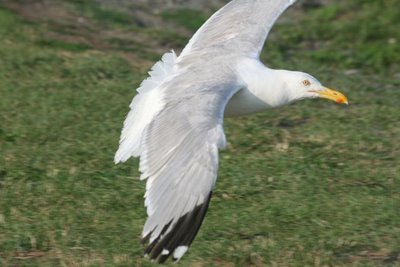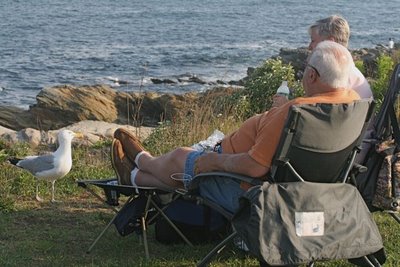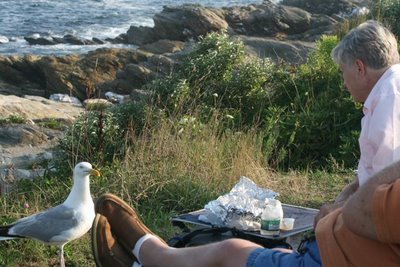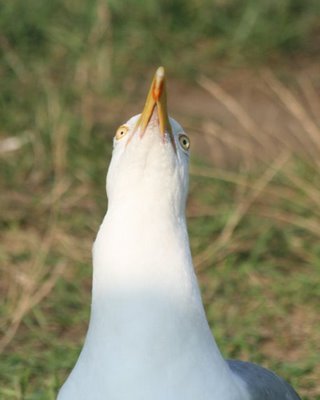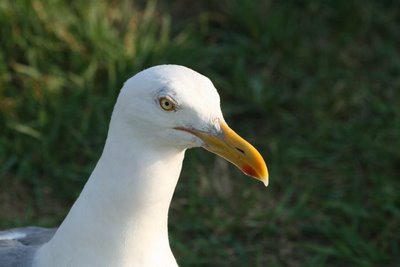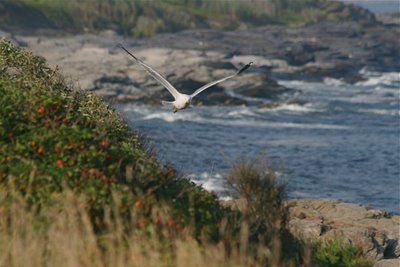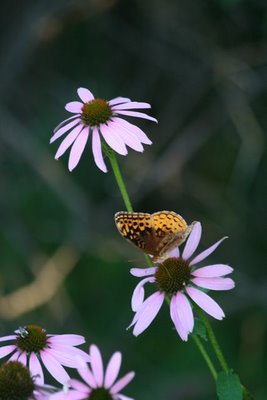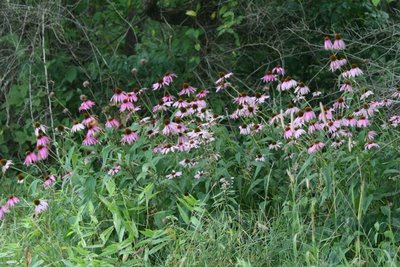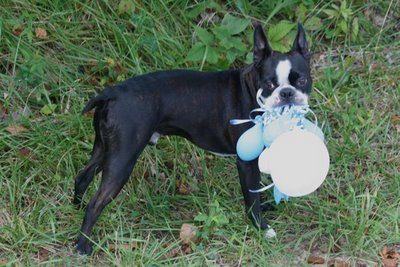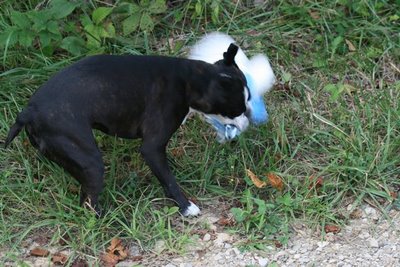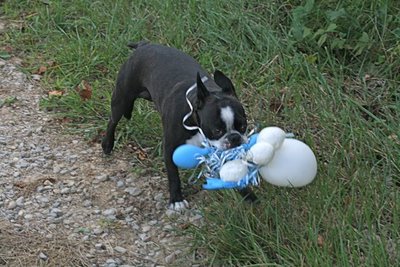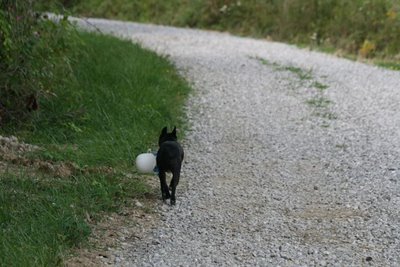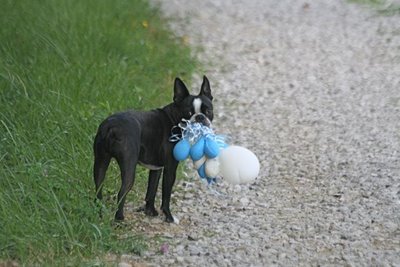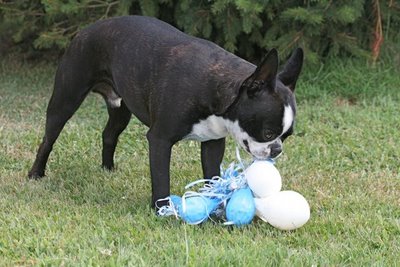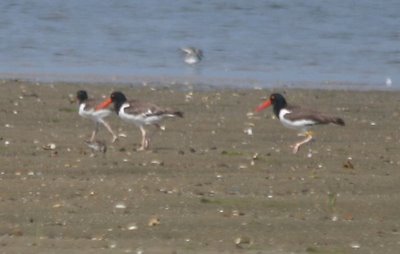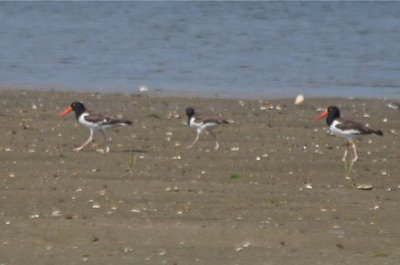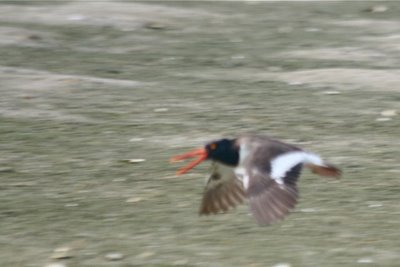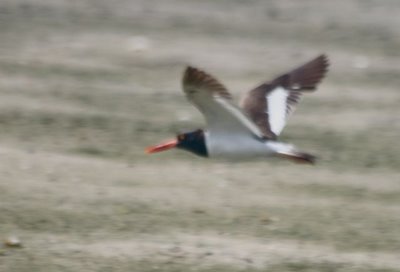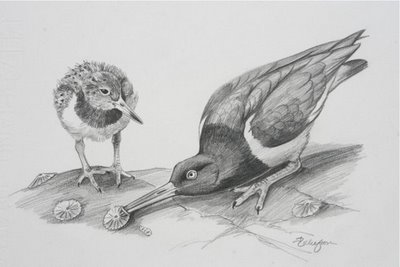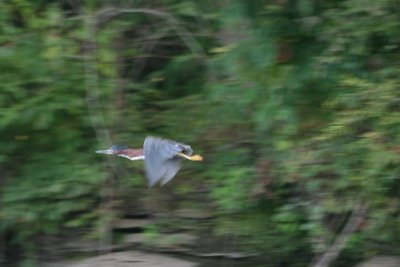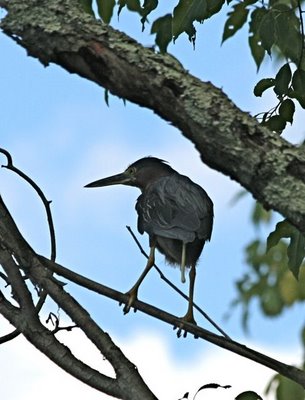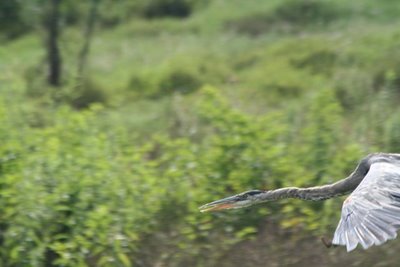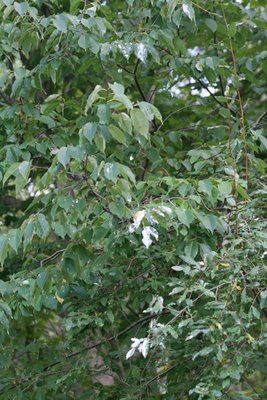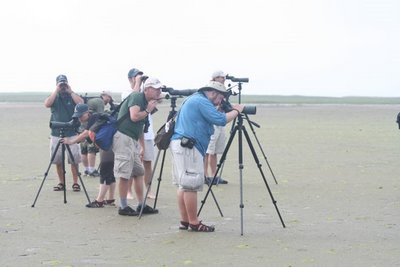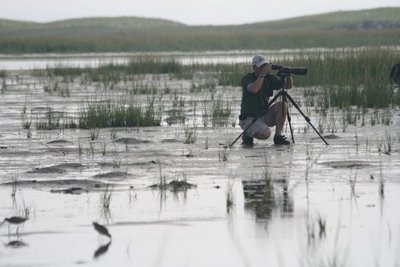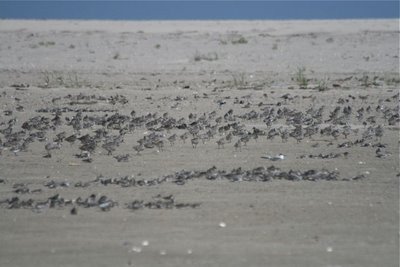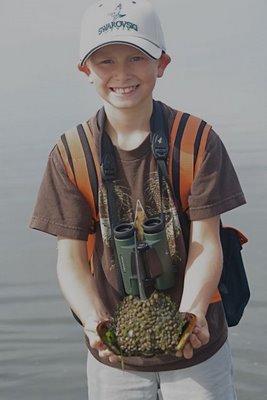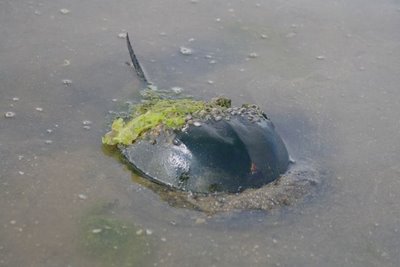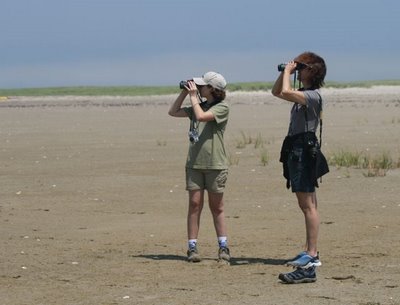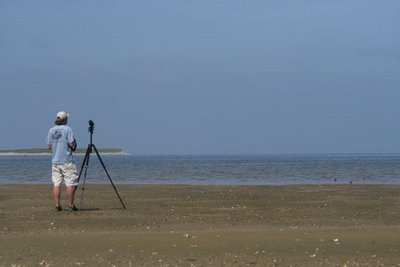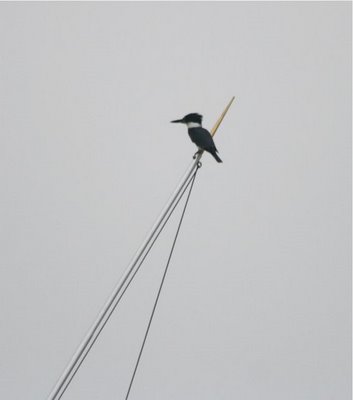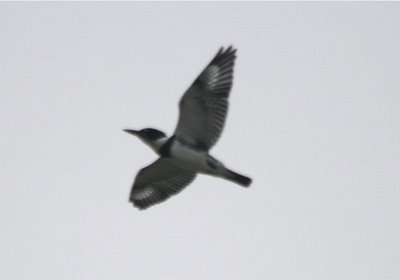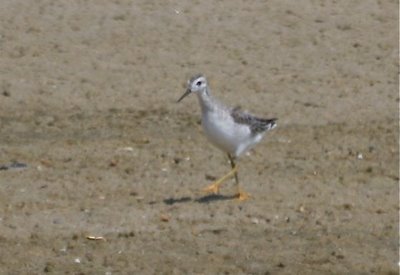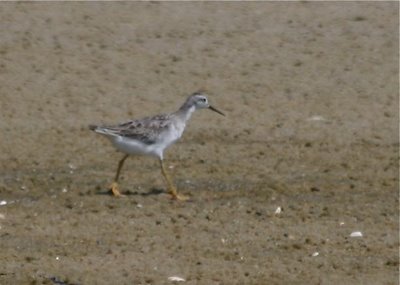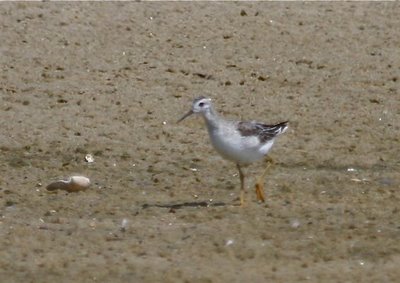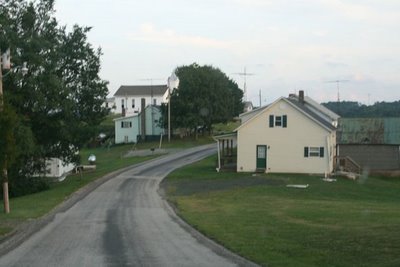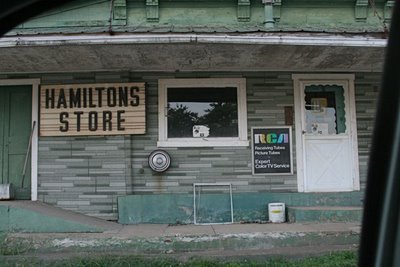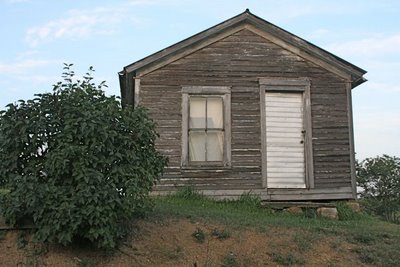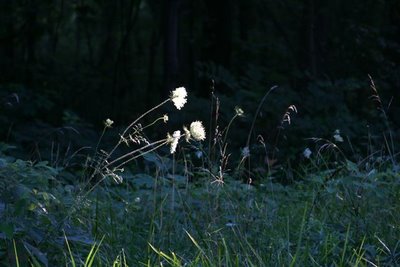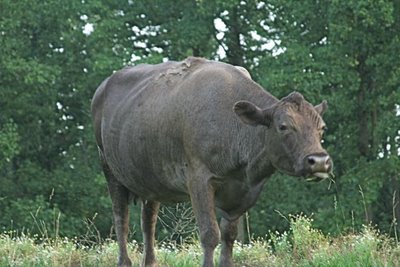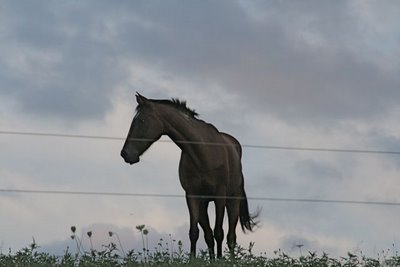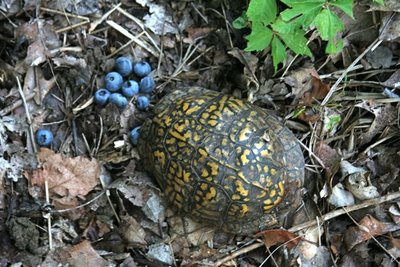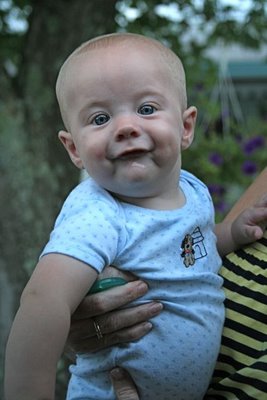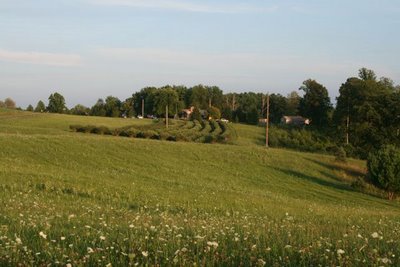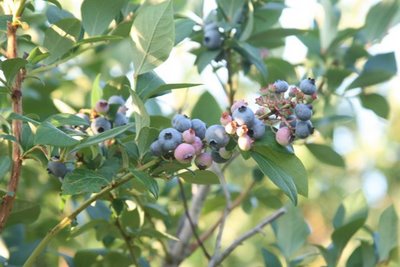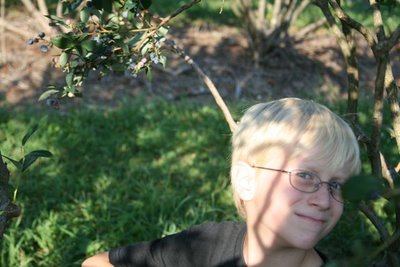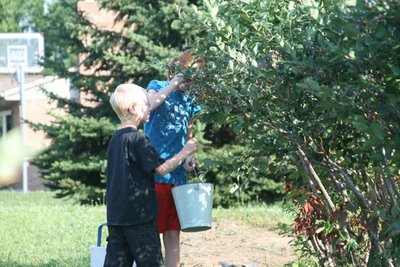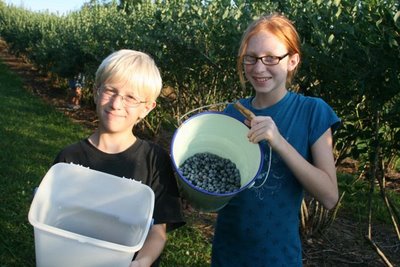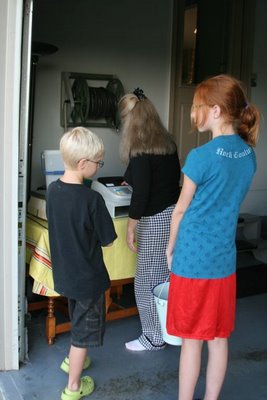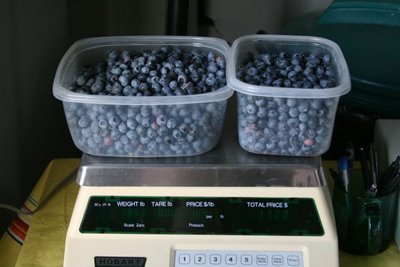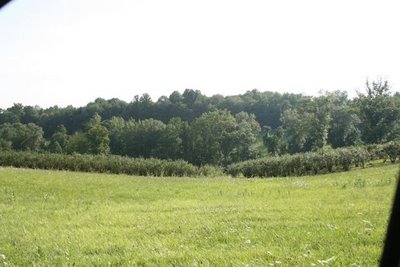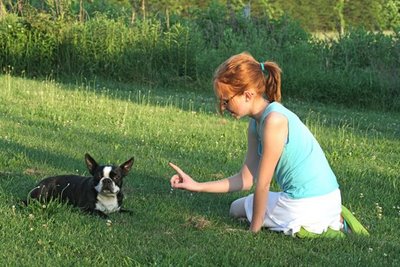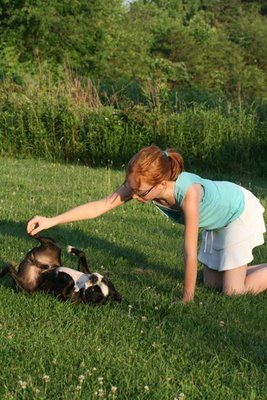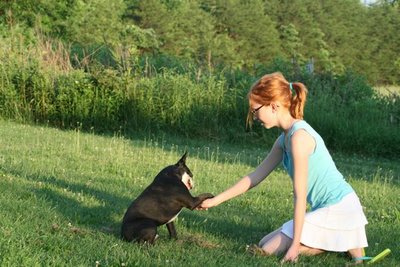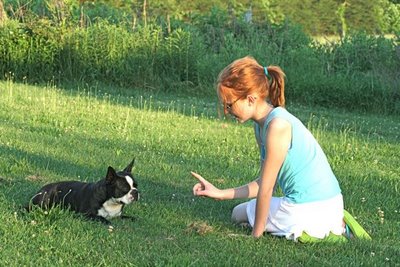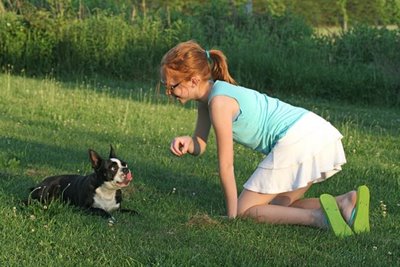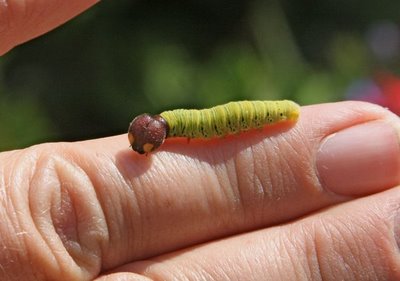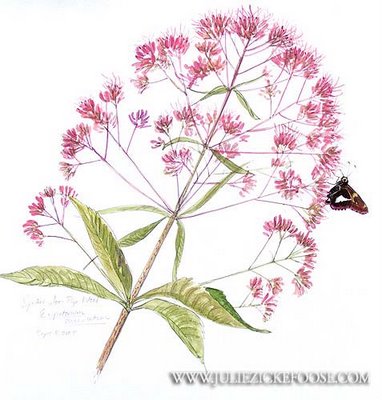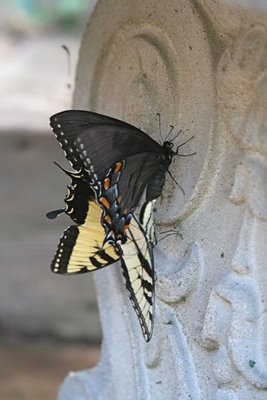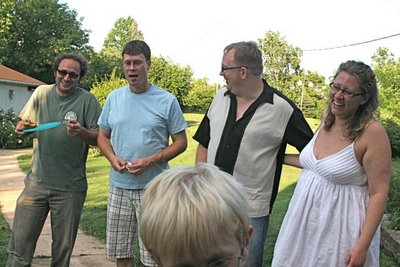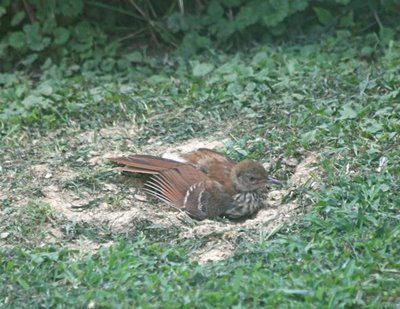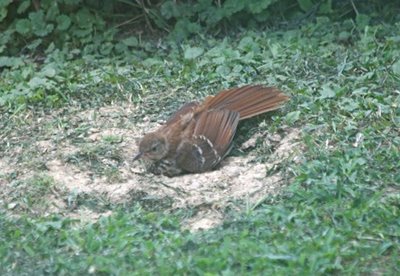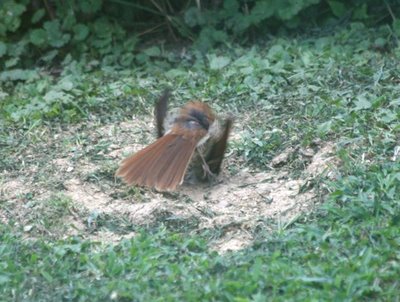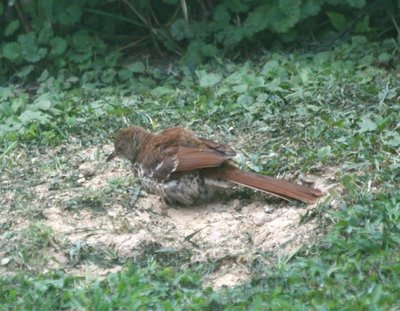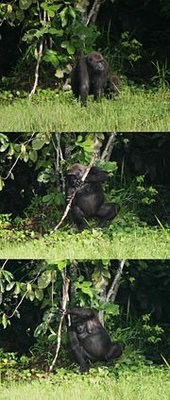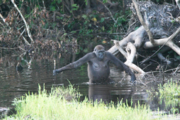The blogworld being what it is, my trip to Swarovski Optik's Cranston, RI headquarters is no secret; it just takes me longer to get around to writing about things than it does most bloggers. It's been quite a summer, and I've seen more airports and put more toiletries into film canisters and quart-sized plastic bags and taken off my shoes and stood barefoot on the carpet of the unwashed millions many more times than I'd like to, but there was one more trip that came up and I couldn't say no. And I'm so glad I went. It was an honor to be asked by Swarovski to come meet with their management team and a number of other bird bloggers, and the trip was intellectually stimulating as well as just plain fun. And delicious.
Although Swarovski Optik has been making binoculars since 1949, they're a relative newcomer to the U.S. market, having hit the scene here in 1988. I got my first pair of 10 x 42 EL's in 1999, the year Liam was born. I remember looking through them at the Midwest Birding Symposium at Lakeside, Ohio, lowering them to rest on the great bulge that was to be our son Liam, and saying to Bill, "If these binoculars drop down out of the delivery room ceiling when I'm in transition, I won't need any Demerol." I got them soon after Liam's birth, and I've loved them hard, throwing them in tote bags and backpacks, birding on the ocean and the desert and in the humid forest of Guatemala, lugging them up volcanoes and down into canyons.
First on our agenda was a visit to the new repair and assembly facility in Cranston. Before this facility came into being, binoculars were sent to Austria for repair, but no more. They're now repaired right here, and turned around in an average of ten days. For those who can't go without their bins, there's even a loaner program.
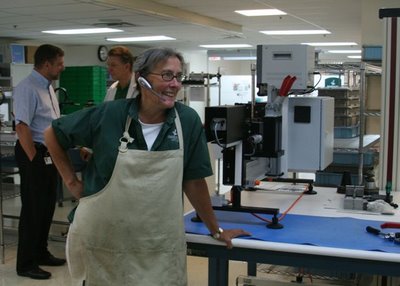
Gail Fisher is head of repair and assembly. She's a great person, full of life and good humor and practical know-how. Still, my heart stopped when she took one of the three pairs of Swarovski's I'd lugged to Rhode Island for a look-over, dug her fingernails into the rubber armoring, and simply ripped it off, as casually as you would peel a banana. Wha-ha-happened?
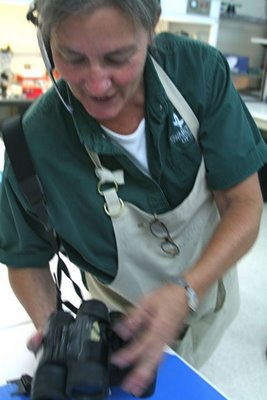
The photo's blurry because I was screaming.
Once I'd calmed down, realizing that these binoculars were in the Best Hands at the Source of Optics Care, Gail gave us a look at what goes into them. I immediately discarded my plan to disassemble and clean my own binoculars some rainy Saturday.
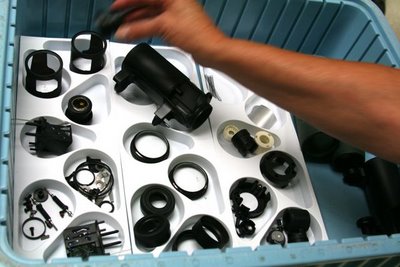 Birdchick
Birdchick checks out one of the fabulous crystal prisms that channel images through the binocular's mysterious interior.
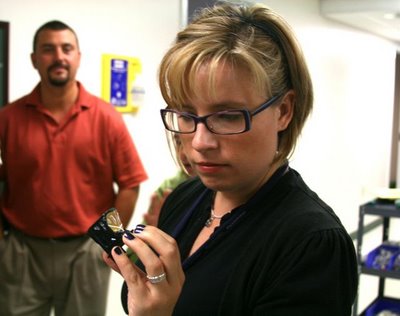
And here the prisms are in place. Crystal works for optics as well as it does for jewelry; many people know Swarovski's name only from its peerless crystal. Birders know otherwise ; these are the binoculars against which others are measured.
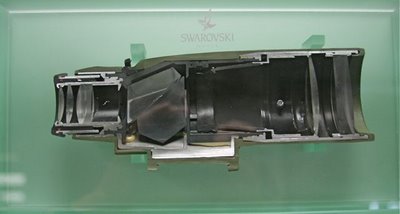
When Bill and I got married in 1993, he gave me a gold watch with something sweet inscribed on its back. The first time its battery ran down, I took it back to Baker and Baker (yes, that's the jeweler's name) and asked to buy a new battery. The jeweler took the watch and replaced the battery without charge. I was mystified. He said, "When you buy a watch that nice, the least we can do is keep you in batteries for its lifetime."
Swarovski has a similar philosophy, but they take it even farther. Fully 60% of the binoculars that come in are given upgrades to a newer model; customer loyalty is so important to Swarovski that they want us to have the best they can offer. Quality control is paramount. If a batch of ten spotting scopes comes in for assembly and one doesn't pass muster, all ten get torn apart. Spotting scopes and rifle scopes will all be repaired here, as well, guaranteeing a fast turnaround for those of us who can't live without our optics.
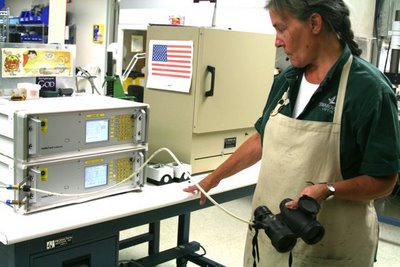
Gail showed us how she tests to make sure a binocular is sealed and waterproof; she hooks it up to this machine, which forces air into it. Once she's sure there are no leaks (and amazingly, the SLC's shown--Bill's oldest, thoroughly beat-up pair of Swarovskis-- was leak-free) she runs nitrogen gas into it to purge it of any moisture that might have crept in. She also submerges binoculars in a tank of water and watches for bubbles: old fashioned but effective.
There follow several different tests to make sure the binoculars' two barrels are perfectly aligned; this is the twin collimator.
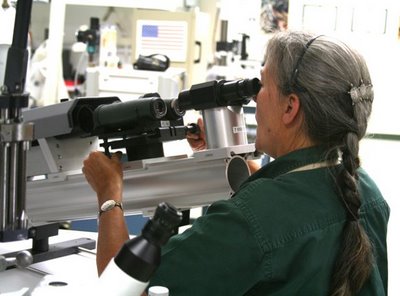
See the red dots projected on the wall in the photo below? These binoculars are badly out of alignment. For those who don't know what that means, if you have some old binoculars and you look through them for awhile, and they give you a headache, that's probably because they're out of alignment. Or if your eyes go all swimmy when you lower the binocs, it's probably because the two images from the twin barrels of the binocular don't line up--they're out of whack. So your poor brain and eyes have to work overtime to make a cogent single image out of those two discordant halves, and it hurts after awhile. You want your binoculars to be perfectly aligned!
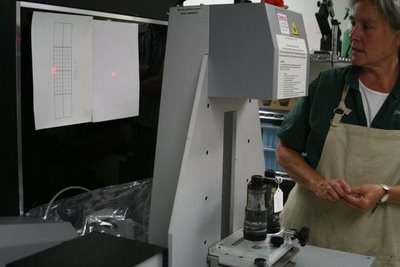
Itty bitty replacement hawks for the rubber armoring.
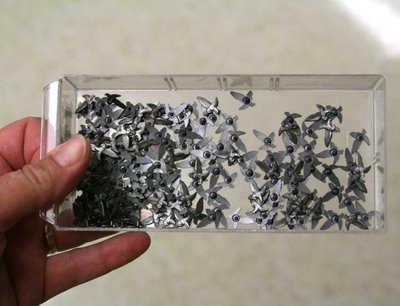
A celeb endorsement. Birdchick and I decided it was probably high time for some 8 x 10 glossies we can send out like Jeff Foxworthy does. I'm sure there are lots of companies that are elbowing each other to tack a signed Science Chimp glossy to their workroom bulletin boards.

I was impressed by the level of care given a Swarovsi customer. I don't want to sound hokey, but the company seems to consider people who invest in their optics a new member of their family. Family members should take such good care of each other. When one customer's Lab puppy chewed up his binoculars, Gail returned them, good as new, with a bag of rawhide chews.
Getting Swarovski binoculars wet won't hurt them in the least! Dean Capuano, PR and Advertising executive, deliberately dropped his in 12 feet of salt water and left them there for four hours, just to prove a point. They were fine. And a researcher for Denver Holt's Owl Institute dropped a pair on the tundra while studying snowy owls, and they were lost for three years. When they were picked up again, they were a little cruddy looking, cosmetically, as you would be had you sat out for three Arctic winters, but optically they were fine. But one young boy got his dad's pair wet and decided to dry them in the microwave. They exploded. Gail replaced them.
So you see that high-ticket binoculars come with a high-end guarantee, and customer service that goes well beyond the call of duty. I've had my EL's in for cleaning three times, and this time Gail recalibrated the focus wheel so it snaps to with less than half the revolutions it formerly took. She did the same for Bill of the Birds' pair. What a delight. It gives me great peace of mind to know that whatever happens will be resolved quickly, Stateside, and overwhelmingly in favor of the customer.
After our Repair and Assembly tour, we adjourned to the conference room, where our small band of bloggers feverishly exchanged ideas and philosophies. We were honored to be there, and to have Albert Wannenmacher, CEO of Swarovski Optik N.A., (right) sit in on all the proceedings. That's Dean Capuano in green.

Albert is a kind man with a winning smile and a real interest in cultivating a relationship with the bird-blogging community. The Swarovski team listened carefully to what we had to say. They were all supportive and friendly and open to our ideas. Our approaches were all different, but it was clear that the seven of us bloggers had a common motivator--the desire to share what's interesting and good. It was wonderful to be treated as if we have something important to contribute; as members of what
Born Again Birdwatcher called "the new media."
I don't know about that title, but it is clear that birding blogs are getting read by increasing numbers of people. I liken keeping a blog to publishing a little magazine five days a week. It's a responsibility and a job to keep content flowing like that, day in and day out. And Swarovski gets that. They're ahead of the curve in bringing bloggers together and forging a personal relationship with us. They've extended the first hand, and for that I am grateful.
Labels: blogger meeting, quality control at Swarovski, Swarovski binoculars, Swarovski Optic

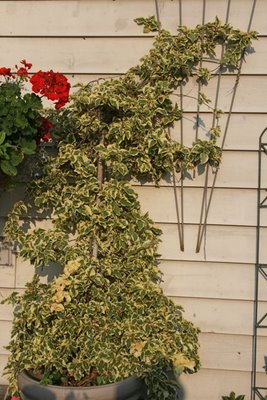
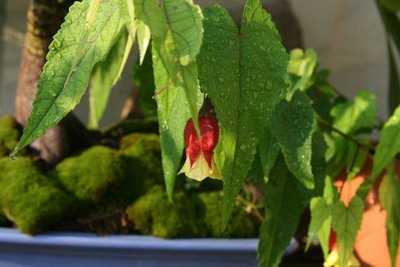 This is a funny little abutilon, or flowering maple, from Africa, whose name is Abutilon megapotamicum. I got it as a cutting from a friend many years ago. The rabbits ate it down to stubs twice this spring, and this is its first bloom. I like the flower form. It's related to hibiscus, actually.
This is a funny little abutilon, or flowering maple, from Africa, whose name is Abutilon megapotamicum. I got it as a cutting from a friend many years ago. The rabbits ate it down to stubs twice this spring, and this is its first bloom. I like the flower form. It's related to hibiscus, actually. Purple heliotrope is a year-round must for me. It smells like cherry vanilla candy. Mmmm. I can't pass it without stooping to sniff, which is why it's planted right on the edge of the raised bed. Gotta get those things up right under your nose or you miss what's wonderful about them.
Purple heliotrope is a year-round must for me. It smells like cherry vanilla candy. Mmmm. I can't pass it without stooping to sniff, which is why it's planted right on the edge of the raised bed. Gotta get those things up right under your nose or you miss what's wonderful about them.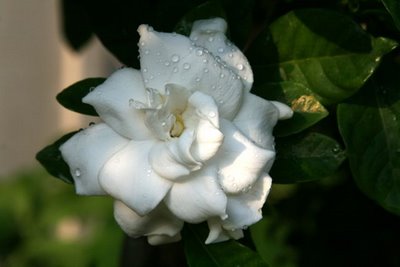 Speaking of sniffing, a gardenia opened this morning. Show me a more heavenly scent, a better-rounded, more complex earthly delight than the aroma of gardenias. I will plant the flower. Or I probably already am growing it. (Tuberoses are in bud!!)
Speaking of sniffing, a gardenia opened this morning. Show me a more heavenly scent, a better-rounded, more complex earthly delight than the aroma of gardenias. I will plant the flower. Or I probably already am growing it. (Tuberoses are in bud!!)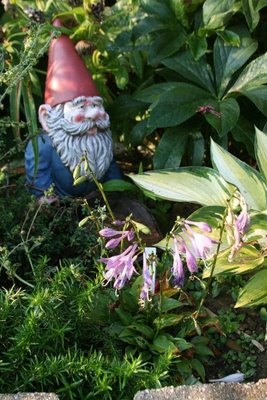 This little hosta, Baby Tears, is just going nuts this year. One-foot-tall gnome for scale. It's the smallest hosta I know, but knowing hosta freaks, they've come up with something tinier by now.
This little hosta, Baby Tears, is just going nuts this year. One-foot-tall gnome for scale. It's the smallest hosta I know, but knowing hosta freaks, they've come up with something tinier by now. Speaking of going ape, here's Fuchsia magellenica, from southern South America. It's a perennial fuchsia and the hummingbirds love it when it finally gets going in late August. There's something utterly disarming about having a fuchsia come up after the snow melts, having lived through the winter, and throw out little red and purple ballerina flowers all summer.
Speaking of going ape, here's Fuchsia magellenica, from southern South America. It's a perennial fuchsia and the hummingbirds love it when it finally gets going in late August. There's something utterly disarming about having a fuchsia come up after the snow melts, having lived through the winter, and throw out little red and purple ballerina flowers all summer. It's so vigorous this year, I'm wondering if it's planning to die, like the other three that used to be in this garden bed. I'll take some cuttings into the greenhouse this fall, just in case it has something up its sleeve. I've read that in California, this fuchsia can make a 6' high hedge!
It's so vigorous this year, I'm wondering if it's planning to die, like the other three that used to be in this garden bed. I'll take some cuttings into the greenhouse this fall, just in case it has something up its sleeve. I've read that in California, this fuchsia can make a 6' high hedge!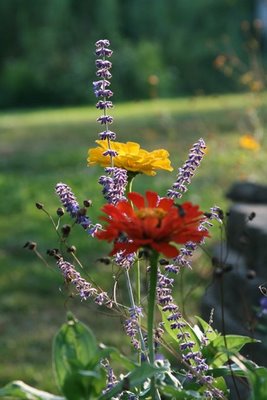 It wouldn't be a Zick garden without Russian sage and Mexican zinnias, mixing together in perfect exotic harmony. I've had to individually cage each zinnia I've planted this year, no thanks again to the rabbits. But oh, they're worth it.
It wouldn't be a Zick garden without Russian sage and Mexican zinnias, mixing together in perfect exotic harmony. I've had to individually cage each zinnia I've planted this year, no thanks again to the rabbits. But oh, they're worth it. I hope you've enjoyed this little garden tour. How I'll miss them all when frost comes. I'm rolling in beauty right now. And we got three inches of rain thanks to the hurricane, so I won't have to water for a couple of weeks.
I hope you've enjoyed this little garden tour. How I'll miss them all when frost comes. I'm rolling in beauty right now. And we got three inches of rain thanks to the hurricane, so I won't have to water for a couple of weeks.
